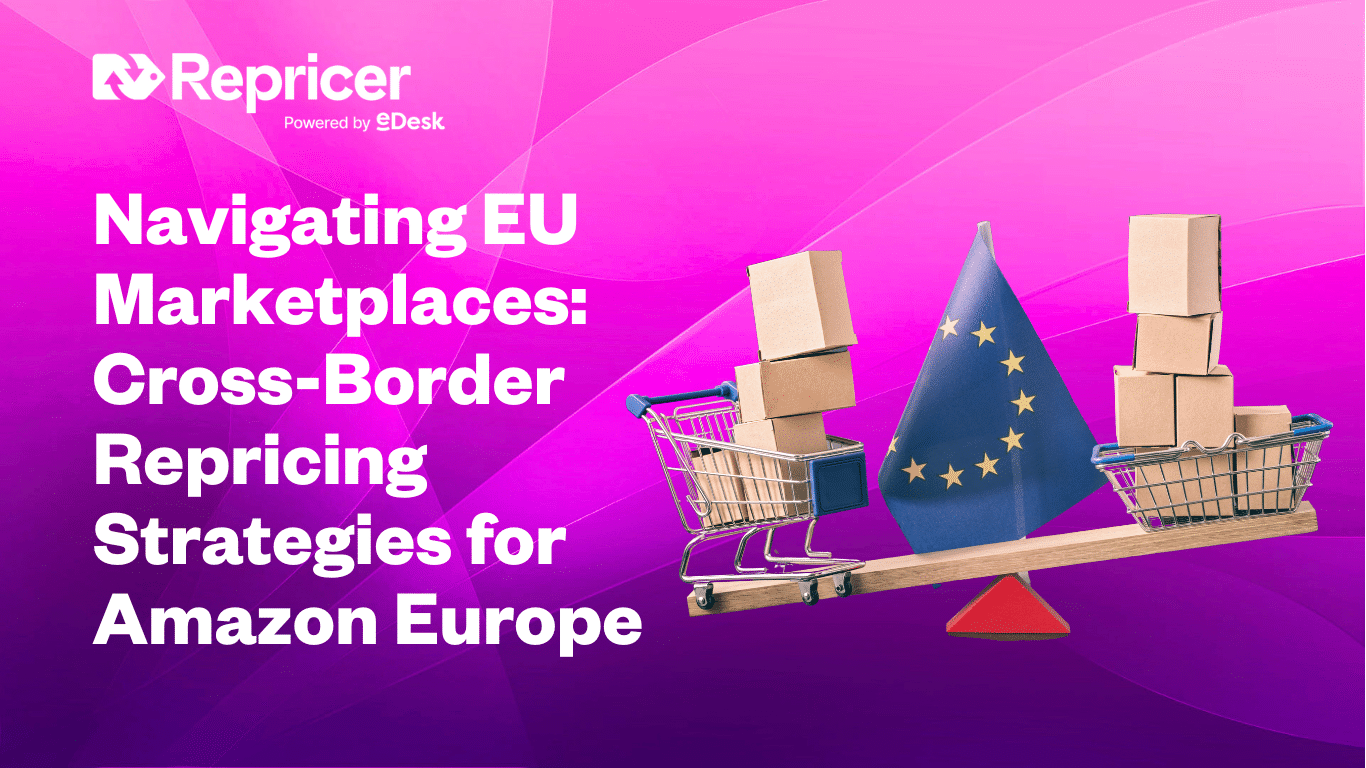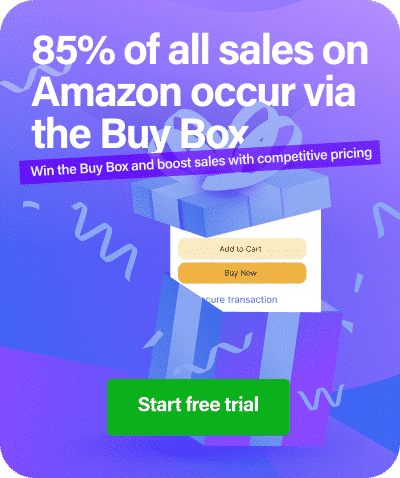Picture this: you’re successfully selling on Amazon.com, but you’re missing out on Europe’s massive eCommerce market that’s projected to reach $89.5 billion by 2025. Expanding to Amazon’s European marketplaces seems like the logical next step, but then reality hits. Managing repricing in Amazon Europe marketplaces isn’t just about duplicating your US strategy across the pond—it’s a complex dance of VAT regulations, currency fluctuations, and marketplace-specific competition that can make or break your international success.
If you’ve been hesitant about European expansion because of repricing complexities, you’re not alone. Many sellers struggle with the intricate web of cross-border ecommerce pricing strategy challenges that come with Amazon’s European ecosystem. But here’s the good news: with the right approach and tools, you can master multi-marketplace repricing and unlock significant revenue opportunities.
Understanding the European Amazon Landscape
Amazon’s European presence spans multiple marketplaces, each with its unique characteristics and challenges. As of 2025, Amazon operates active marketplaces in 23 countries worldwide, with significant European operations including Germany, France, Italy, Spain, the Netherlands, Sweden, Poland, and Belgium.
The numbers are compelling: Germany leads as Europe’s largest Amazon marketplace, followed by the UK, despite Brexit-related complexities. France, while showing the most reluctance toward Amazon with the lowest share of wallet allocated to the marketplace, still represents a massive opportunity for sellers who can navigate its unique market dynamics.
Key European Market Statistics:
- Over 275,000 third-party sellers operate across Amazon EU marketplaces
- Amazon serves over 81 million people across emerging European markets
- European eCommerce growth rate is expected to reach 12.1% by 2024
- Germany and UK represent the largest revenue opportunities after the US market
The Repricing Challenges Unique to Amazon Europe
VAT Complexity: The August 2024 Game Changer
One of the most significant challenges facing sellers in 2024 has been the fundamental shift in VAT treatment for Amazon fees. Starting August 1, 2024, Amazon began charging local VAT on selling and fulfillment fees across EU marketplaces—a change that has forced sellers to completely rethink their pricing strategies.
Previously, most Amazon fees were billed from Luxembourg under the Reverse Charge Mechanism. Now, if your business is established in the UK, Germany, France, Italy, Spain, the Netherlands, Poland, Belgium, or Sweden, you’ll receive invoices from your local Amazon EU branch with applicable local VAT rates. This means:
- UK sellers now pay 20% VAT on Amazon fees
- German sellers face 19% VAT on fees
- Polish sellers deal with 23% VAT rates
- Spanish sellers encounter 21% VAT charges
The silver lining? VAT-registered sellers can typically reclaim this VAT through their normal VAT return process, but this creates cash flow implications that must be factored into your repricing strategy.
Currency Conversion Pricing Headaches
Managing currency conversion pricing across multiple European marketplaces adds another layer of complexity. Exchange rate fluctuations can significantly impact your profit margins, especially when you’re trying to maintain competitive pricing across markets. A repricing strategy that worked yesterday might leave you unprofitable today if currency markets shift dramatically.
Marketplace Specific Rules EU Variations
Each European marketplace operates with its own competitive landscape and customer behavior patterns. What works on Amazon.de might fail miserably on Amazon.fr. French consumers, for instance, have shown the most resistance to Amazon, preferring local alternatives, which means your repricing strategy needs to account for different competitive dynamics.
Amazon EFN vs. Local Stock: Strategic Implications
Your fulfillment method dramatically impacts your repricing strategy. The Amazon EFN (European Fulfillment Network) allows you to store inventory in one country and fulfill orders across Europe, but this comes with specific pricing considerations:
EFN Advantages:
- Centralized inventory management
- Reduced upfront investment
- Simplified logistics
EFN Pricing Challenges:
- Higher fulfillment fees for cross-border shipments
- Longer delivery times may require more aggressive pricing
- VAT-inclusive pricing complications across different destination countries
Alternatively, storing local stock in multiple countries through pan-European FBA pricing strategies offers better delivery times and lower fulfillment costs but requires more sophisticated inventory and pricing management.
International Shipping Costs Impact
International shipping costs have become increasingly volatile, requiring dynamic repricing approaches. Sellers using EFN report shipping cost savings of 48%-57% compared to traditional cross-border shipping when leveraging Amazon’s optimized fulfillment network, but these savings must be reflected in your competitive pricing strategy.
Building Your Multi-Marketplace Repricing Strategy
1. Implement Localized Pricing Rules
Your Amazon EU repricing tool needs to handle the complexity of different VAT rates, currencies, and competitive landscapes. Consider setting different minimum and maximum prices for each marketplace based on:
- Local competition analysis
- VAT-inclusive pricing requirements
- Currency conversion rates with appropriate buffers
- Shipping and fulfillment cost variations
2. Factor in vat repricing rules
With the August 2024 VAT changes, your repricing strategy must account for:
- VAT-inclusive pricing for all customer-facing prices
- VAT reclaim timelines affecting cash flow
- Different VAT rates across product categories and countries
- Marketplace-specific VAT reporting requirements
3. Optimize for Pan-European Success
Successful pan-European FBA pricing requires a coordinated approach across all European marketplaces. Consider implementing:
- Dynamic currency hedging in your pricing calculations
- Competitive intelligence for each marketplace
- Inventory velocity optimization across fulfillment centers
- Local market pricing rather than simple currency conversions
Advanced Repricing Strategies for Amazon Europe
Geographic Pricing Optimization
Smart sellers use geographic data to optimize pricing. Products that are premium in one market might be commoditized in another. For example, organic food products command higher premiums in Germany compared to Eastern European markets, requiring different positioning strategies.
Seasonal and Cultural Considerations
European markets have distinct seasonal patterns and cultural preferences. German consumers are highly price-sensitive and respond well to detailed product information, while Italian customers prioritize brand heritage and quality perceptions. Your repricing strategy should account for these cultural nuances.
Competitive Landscape Analysis
Each marketplace has different competitive dynamics. Use repricing strategies that account for local competitors, not just international sellers. This often means setting different competitive positioning in each market.
Technology Solutions for Multi-Marketplace Management
Managing repricing across multiple European marketplaces manually is practically impossible at scale. Modern repricing solutions need to handle:
- Multi-currency operations with real-time exchange rate updates
- VAT-inclusive pricing calculations for customer-facing prices
- Marketplace-specific rules and competitive algorithms
- FBA fee variations between EFN and local fulfillment
When evaluating Repricer integrations for Amazon operations, ensure your chosen solution can handle the complexity of European VAT regulations and currency management.
Monitoring and Optimization
Success in European marketplaces requires continuous monitoring and optimization. Key metrics to track include:
- Profit margins after VAT reclaim timing
- Competitive positioning in each marketplace
- Inventory turnover across fulfillment methods
- Currency impact on profitability
Regular analysis of these metrics through comprehensive insights helps refine your cross-border eCommerce pricing strategy and identify opportunities for improvement.
Preparing for Future Changes
The European regulatory landscape continues to evolve. Stay informed about:
- IOSS (Import One-Stop Shop) enforcement becoming more stringent
- Digital Services Act implications for marketplace operations
- Carbon border adjustment mechanisms affecting pricing calculations
- Payment method localization requirements
Consider leveraging resources like the Amazon European Expansion Accelerator to stay ahead of regulatory changes and market opportunities.
Taking Action: Your European Expansion Roadmap
Successfully navigating repricing in Amazon Europe marketplaces requires a strategic approach that accounts for the unique complexities of each market. Start by:
- Auditing your current pricing strategy for European compatibility
- Implementing VAT-compliant repricing rules following the August 2024 changes
- Testing different fulfillment strategies (EFN vs. local stock) for your product categories
- Setting up marketplace-specific competitive monitoring
- Establishing currency hedging protocols for pricing stability
The European market represents a massive opportunity for Amazon sellers willing to navigate its complexities. With proper planning, the right tools, and a localized approach to pricing strategy, you can build a profitable presence across Amazon’s European ecosystem.
Your success in European marketplaces isn’t just about translating your US strategy—it’s about creating a sophisticated, multi-faceted approach that respects local market dynamics while leveraging Amazon’s powerful fulfillment infrastructure. The sellers who master this balance will find themselves well-positioned to capture the significant growth opportunities that European eCommerce expansion offers.
Ready to tackle European marketplace expansion? The complexity might seem daunting, but with the right repricing strategy and tools, you can turn these challenges into competitive advantages that drive sustainable international growth.





